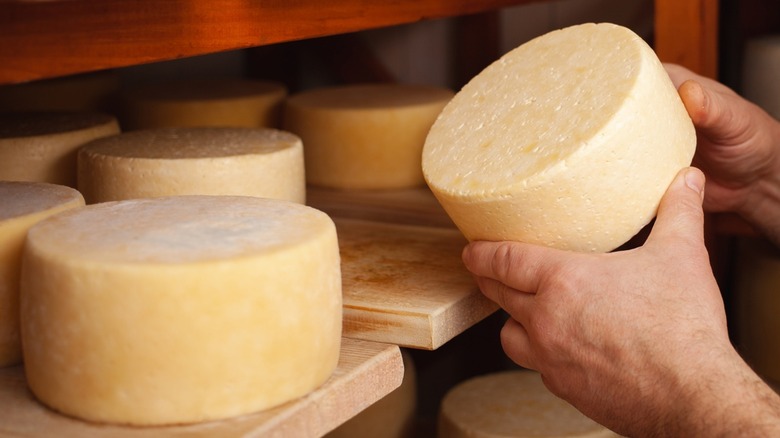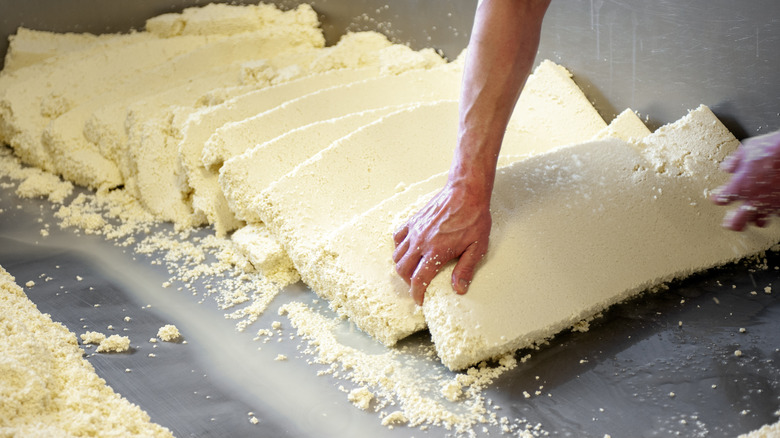The Process For Making Cheddar Cheese Is Oddly Satisfying
Some kinds of foods are so incredibly popular that folks stop using their name at all. For most people who aren't '90s club DJs, 'cheese' means 'cheddar'. The classic yellow-orange block, so familiar on burgers and in sandwiches, is America's most popular cheese. Though cheddar is eaten every day in the U.S., we rarely stop to think about how it's made. Aside from being versatile and delicious, cheddar is actually quite fascinating, as the process by which dairies turn milk into cheddar is an oddly stress-relieving treat for the eyes.
Naturally, this has made the humble cheese a social media star. Cheesemaking encompasses several of the internet's favorite things to turn into video content. First of all, it's made in a food factory, and people love to feel like they're getting a peek behind the scenes at these mysterious locations. Secondly, stretchy, supple slabs of slime are subjected to several satisfying processes, undertaken by skilled professionals whose swift swipes, slaps, and stacks create an almost meditative sense of calm. This genre of video, named after the r/oddlysatisfying subreddit, has a huge following and is likened to visual ASMR.
Why is the cheesemaking process oddly satisfying?
Few people are interested in the cheddar cheesemaking process because they want to try it at home. Even if you obtain the specialist equipment and the long list of ingredients (including items like mesophilic direct-set starter culture, liquid animal rennet, calcium chloride, and a surprising amount of milk), you're still facing an involved process of heating, cooling, stirring, slicing, draining, pressing and flipping. But it's the very steps of this method that make cheddar cheese factories perfect for oddly satisfying content, such as this TikTok from user @notyetachef.
@notyetachef #cheese #chef #cheftok #foodtiktok #tiktokfood #cheddar #food #cooking #melting #asmr #satisfying #bussin #howitsmade
Watching professionals make cheddar cheese — and noticing how symmetrical, rhythmic, and practiced their movements are — can actually relieve stress. Professor Craig Richard, the founder of ASMR University, told WIRED, "We're hardwired to be entranced by hand movements ... we evolved to learn fine motor skills by watching what someone else is doing with their hands." This helps to explain why young people, in particular, find these videos mentally relaxing. The videos also offer a break from the seemingly constant stream of bad news and ill-will popping up on our news feeds.
Many forms of self-care have emerged over recent decades, but the oddly-satisfying video trend is here to stay because, unlike so many other anxiety-busting methods, it doesn't require you to invest in a new membership, learn a skill, or adapt your life in any way. Lifestyle changes can be transformative, but sometimes you just need stress relief, now. From this perspective, these videos don't seem quite as odd, though still, obviously satisfying.

